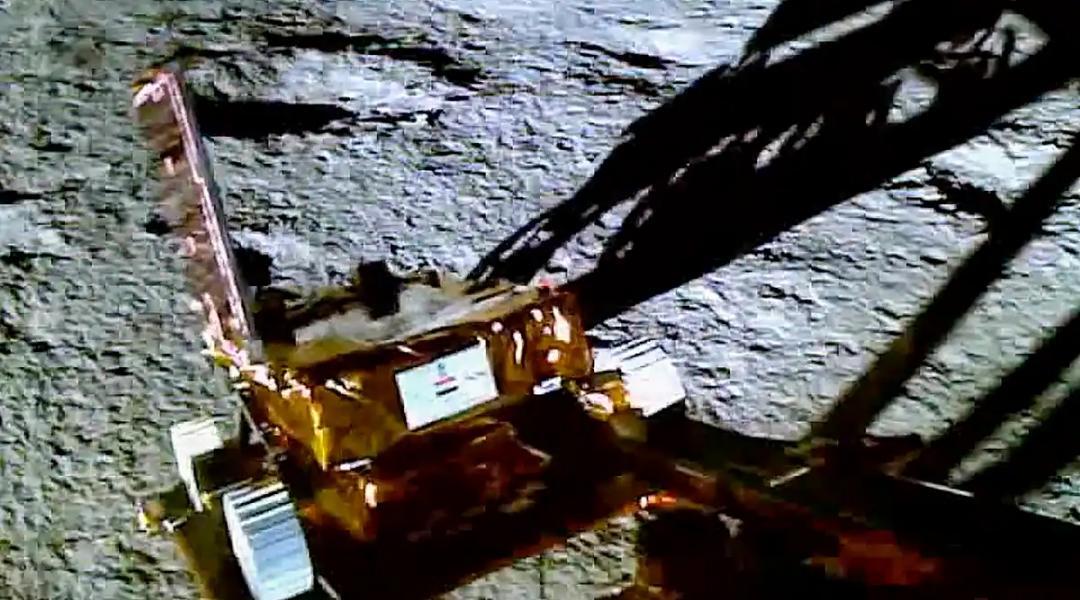ISRO Chief Says It's Okay if Pragyan Rover Doesn't Wake Up on Moon; It Has Done What It Had To
In a recent development in the world of space exploration, the Indian Space Research Organisation (ISRO) has made headlines with its Chandrayaan-2 mission. The Pragyan rover, a vital component of this mission, was placed in sleep mode earlier this month, raising concerns about its ability to reawaken on the lunar surface. However, ISRO's chief, K Sivan, has reassured the world that even if the rover doesn't wake up on the Moon, it has already accomplished its primary mission objectives. In this article, we will delve deeper into the details of the Chandrayaan-2 mission, the purpose of the Pragyan rover, and why its success is a significant milestone in lunar exploration.
The Chandrayaan-2 Mission
The Chandrayaan-2 mission, launched by ISRO in July 2019, aimed to explore the Moon's South Polar Region, a scientifically crucial yet challenging destination. It consisted of three components: the Orbiter, the Vikram Lander, and the Pragyan rover. Each of these elements had specific roles to play in advancing our understanding of Earth's celestial neighbor.
The Orbiter's Role
The Orbiter was designed to orbit the Moon and provide high-resolution images and data about its surface. It has been instrumental in capturing breathtaking lunar landscapes and mapping the Moon's mineral composition.

The Vikram Lander's Challenge
The Vikram Lander had the complex task of making a soft landing on the lunar surface. Unfortunately, it encountered technical difficulties during its descent, leading to a loss of communication and ultimately a hard landing. While this was a setback, it did not deter the mission's overall success.
Pragyan Rover: A Lunar Explorer
Purpose of the Pragyan Rover
The Pragyan rover was the mission's groundbreaker. Its primary objective was to traverse the lunar terrain, conduct experiments, and collect vital data about the Moon's surface and atmosphere. It was designed to operate for one lunar day, equivalent to approximately 14 Earth days, under optimal conditions.
A Short-Lived Triumph
The Pragyan rover landed on the Moon in September 2019 and began its journey of lunar exploration. However, it was not without its challenges. The rover faced unexpected difficulties and ceased functioning after approximately 20 days of operation, which was shorter than its intended mission duration.
ISRO Chief's Perspective
Despite the rover's premature shutdown, ISRO's chief, K Sivan, maintains a positive outlook on the mission's achievements. According to him, the Pragyan rover successfully fulfilled its primary objectives, collecting crucial data that will contribute significantly to our understanding of the Moon.
Mission Accomplished
One of the key milestones achieved by the Pragyan rover was its data collection efforts. It provided valuable insights into the Moon's surface composition, mineral resources, and atmospheric conditions. These findings will aid scientists in unraveling the Moon's geological history and its potential for future lunar missions, including plans for human exploration.
In the world of space exploration, not every mission goes as planned. The Pragyan rover may not reawaken on the lunar surface, but its contributions to our understanding of the Moon are invaluable. ISRO's Chandrayaan-2 mission has demonstrated India's capabilities in lunar exploration and scientific discovery. As we look to the future, this mission serves as a testament to the spirit of exploration that drives humanity to reach for the stars.
Frequently Asked Questions (FAQs)
-
What were the primary objectives of ISRO's Chandrayaan-2 mission? The primary objectives of the Chandrayaan-2 mission were to explore the Moon's South Polar Region, conduct experiments, and gather data on the Moon's surface and atmosphere.
-
Why did the Pragyan rover cease operation prematurely? The Pragyan rover faced unexpected technical challenges that led to its premature shutdown, which occurred after approximately 20 days of operation.
-
What are the key findings from the Pragyan rover's mission? The Pragyan rover provided valuable data on the Moon's surface composition, mineral resources, and atmospheric conditions, contributing to our understanding of the lunar environment.
-
How does the Chandrayaan-2 mission impact future lunar exploration efforts? Despite challenges, the Chandrayaan-2 mission showcases India's capabilities in lunar exploration and provides crucial data for planning future lunar missions, including those involving human exploration.
-
What is the significance of ISRO's Chandrayaan-2 mission for space exploration? ISRO's Chandrayaan-2 mission demonstrates India's commitment to space exploration and scientific discovery, furthering our knowledge of the Moon and its potential for future exploration.
.png)
.png)
